Another vintage Roamer on the blog, this time a chronograph from the Stingray range.
(Click pictures to enlarge)
The Stingray has been a stalwart model in the Roamer line up, first introduced in 1967, the name is still in use today. Many brands associate a model name with a certain style of watch, but that wasn’t the case with the Stingray. A quick search will unearth a wide range of vintage models; dress watches, divers watches and chronographs.
The chronograph in this post was something of a technical high point in the range, and consequently is one of the most desirable/collectable vintage Roamers these days.
On the back of the watch is the distinctive logo found on the majority of Stingray models.
A few posts ago I wrote about another Roamer, a Mustang Indianapolis in which I described Roamer’s patented waterproof case (see that post here). As the watch in this post has the same style of case, I’ll describe it’s construction with the aid of a few pictures taken during disassembly.
In this first picture, you can see that the case top has been separated from the main body of the watch.
As the pressure from the case top around the crystal forms the waterproof seal on these watches, the fit has to be tight; then add in decades of grime and separating the two parts can be tricky.
There is a big temptation to support the case top from below and press on the centre of the crystal to force the sections apart – don’t do this! There is a good chance that the crystal will crack. If you don’t have the Roamer press made for the job, the best way to remove the case top is to use a case knife on the underside and work it into the gap between the two sections all the way around until they can finally be prised apart.
With the case top removed, the main body of the watch is now effectively a one piece case, and the split stem has to be separated to remove the watch from the case.
If you look closely at the picture above you can see that the crystal sits over a lip on the main body, acting as a lid. A thin blade or case knife can be used to lever the crystal up, and the watch can then be removed from the case.
With the watch out of the case and the dial and hands removed, the calibre inside is revealed, a Valjoux cal. 72.
As you can see the movement is in good clean condition and needed no more than a service to bring it back into line.
Cosmetically there were a few issues to address. As you may have noticed in the earlier pictures, the minute hand had a hole in the lume and the paint on the chronograph sweep hand was damaged. With these faults rectified, the only things left to do were re-brush the case top, and polish the crystal before re-assembling the watch.
While researching this post I came across a Swedish advert showing Björn Waldegård – two time winner of the famous Monte Carlo Rally (1969 & 1970) wearing a Stingray chronograph. I wonder if he was wearing one during the races?
Rich.
** Many thanks to Tony Willer for letting me feature his watch on the blog. **

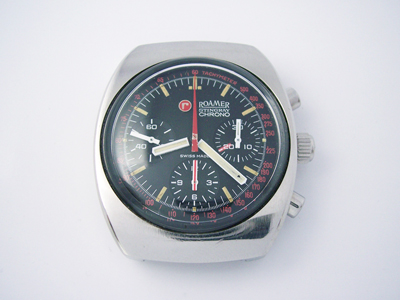
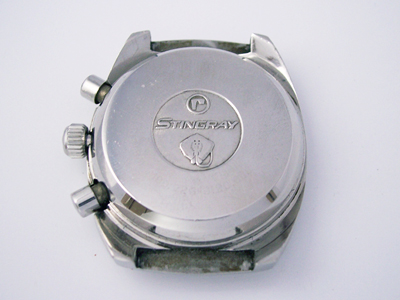
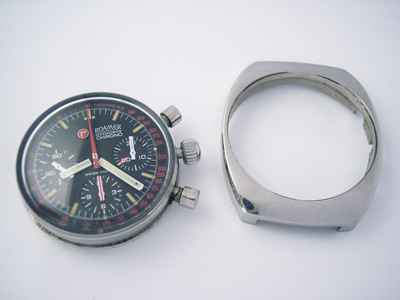
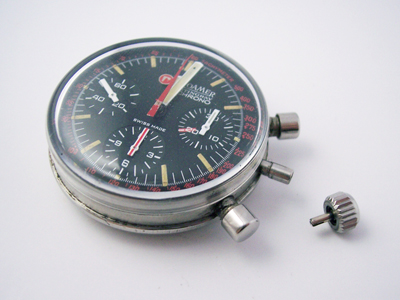
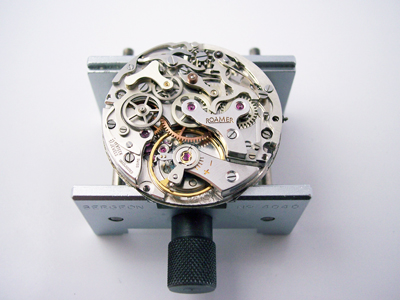
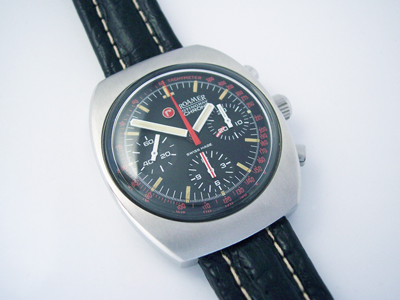
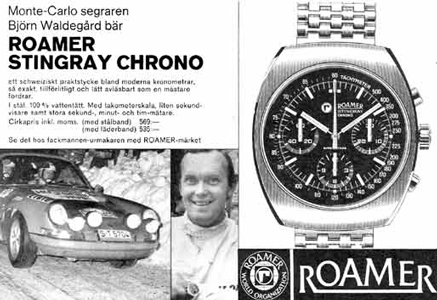
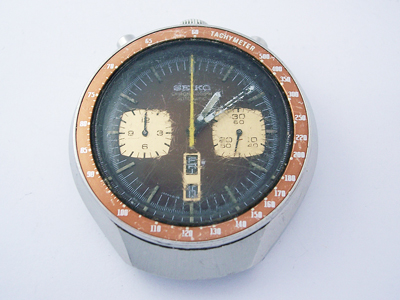
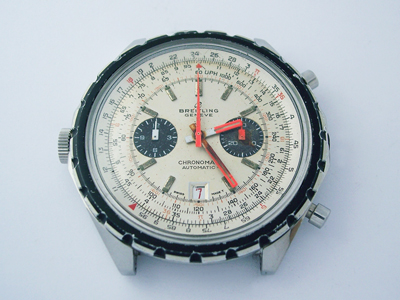
I have just read with interest, the above article on the Roamer Stingray. I have owned one since 1971 and still have the original packaging and receipt from the shop where my mother purchased it from in the jewelery quarter of Birmingham, UK. Several years ago a friend’s retired watchmaker father repaired the watch, which had stopped working. When I got it back I placed it back in the case in which it was bought and it wasn’t until a while later, after losing contact with this friend, that I noticed that one of the small hands on the watch was not the original. Has anyone on this site any ideas where I may get one from? I would be most grateful for any help. Regards.
As always… it’s a joy to read and visually witness the superb evolving renovation of another fine watch c/o your superb skills Rich.
Kind regards
Mark